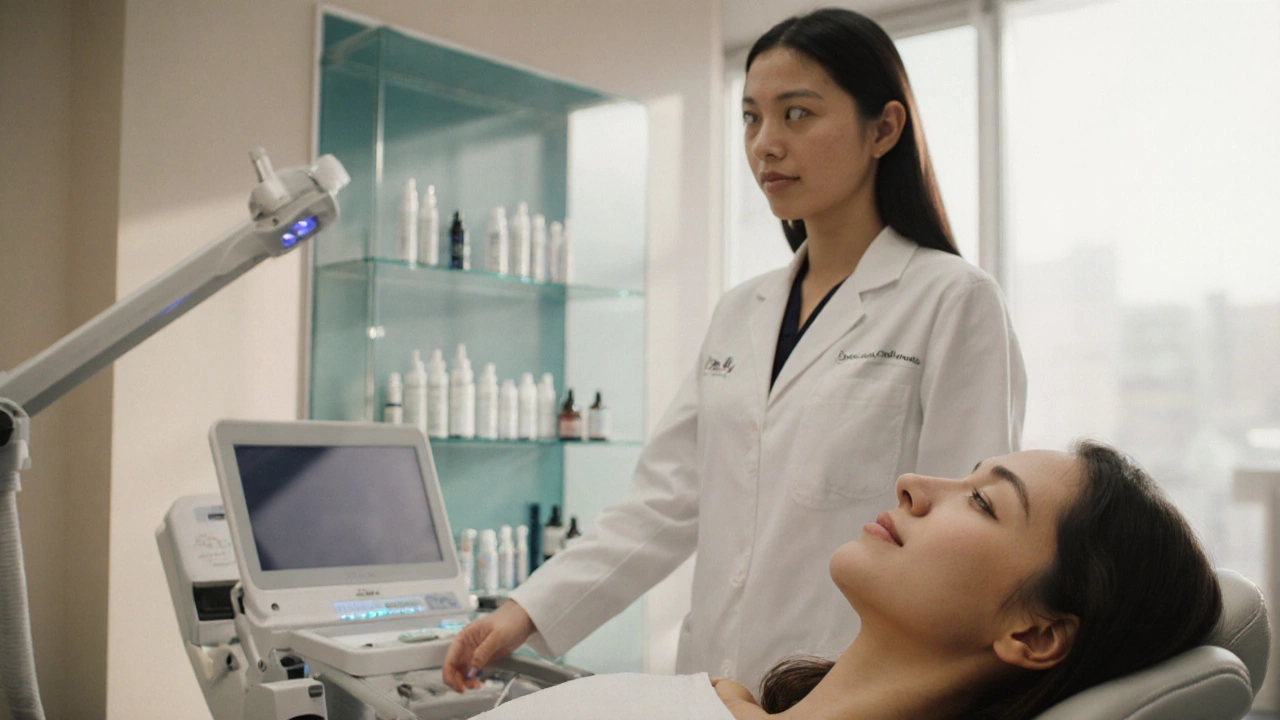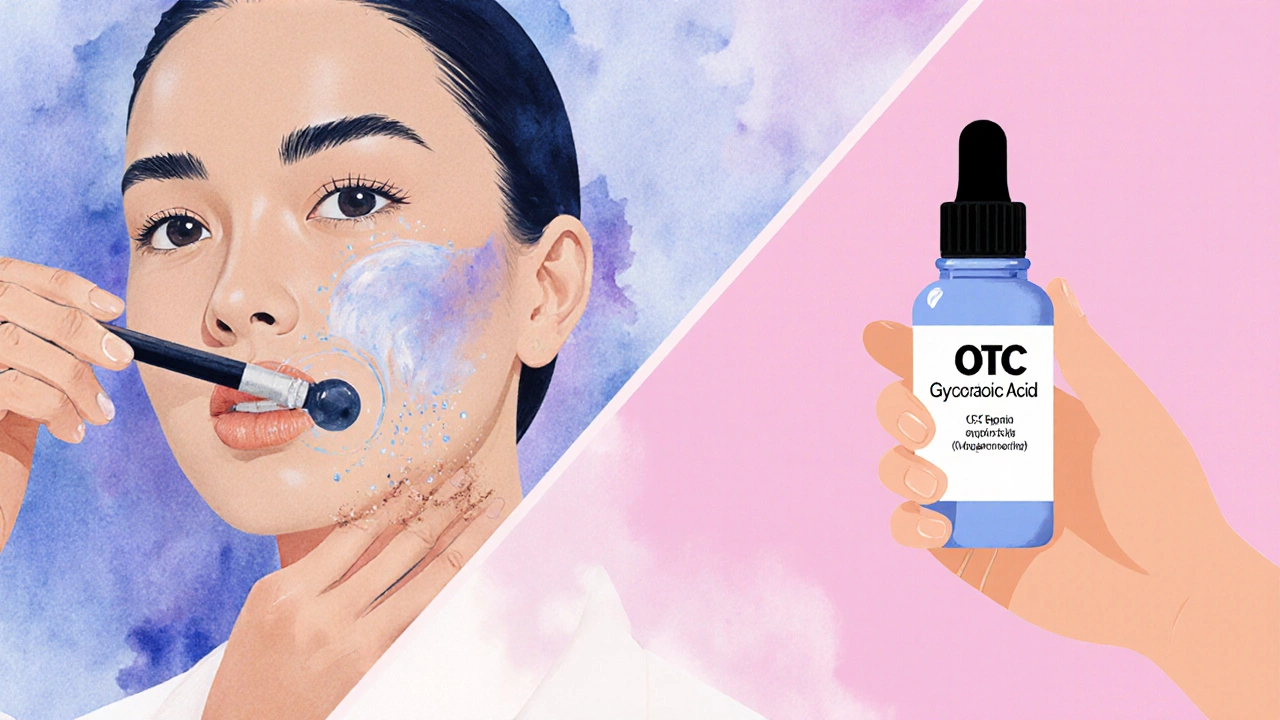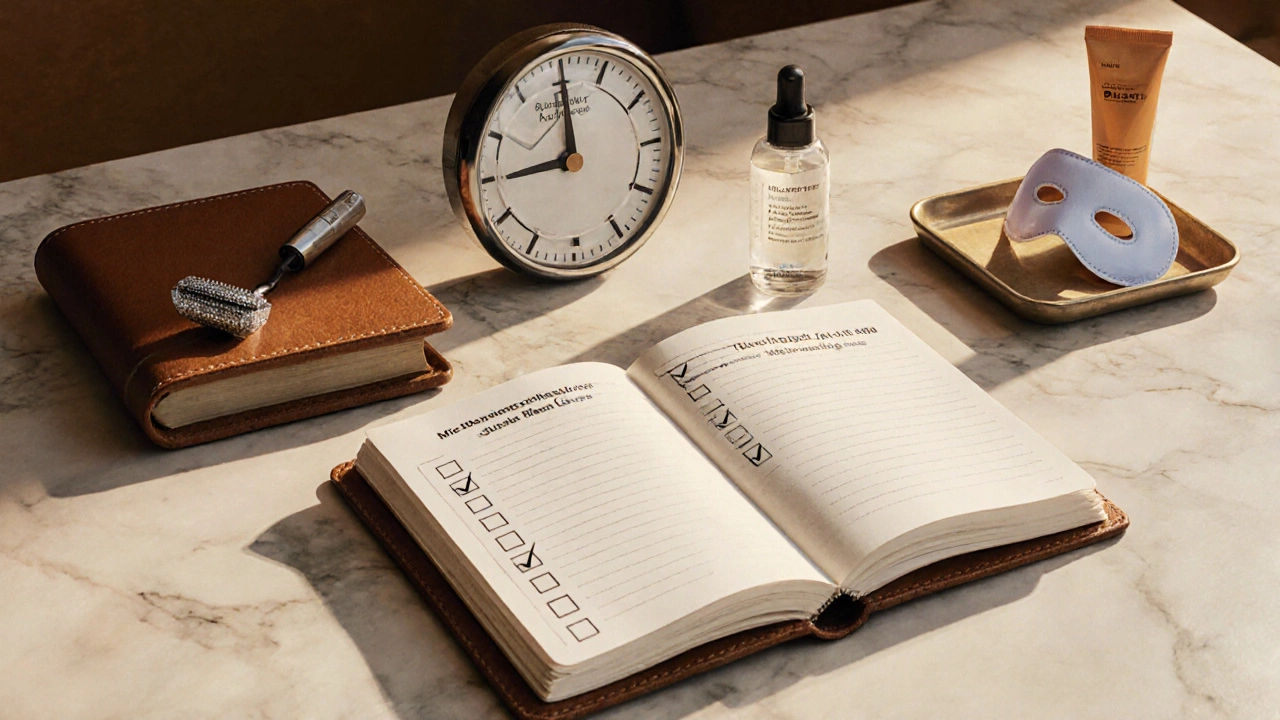
Professional Skincare Value Calculator
Calculate Your Skincare Investment Value
Answer these questions to determine if professional treatments are worth the cost for your skin goals.
When you walk into a clinic and see a client glowing after a treatment, you might wonder if that shine can be bought. Professional Skincare is a suite of services offered by trained skin experts, ranging from clinical-grade peels to high‑tech light therapies, all designed to improve skin health beyond what over‑the‑counter products can achieve.
What Counts as Professional Skincare?
Professional Skincare covers any procedure performed by a licensed Dermatologist a medical doctor specialized in skin health or a certified Esthetician a skincare specialist trained in non‑medical treatments. Typical offerings include:
- Chemical Peel an acid‑based treatment that exfoliates and stimulates collagen
- Microdermabrasion a mechanical exfoliation using fine crystals or a diamond tip
- LED Light Therapy non‑invasive light wavelengths that target acne, inflammation, or aging
- HydraFacial, facial massage, and customized anti‑aging serums.
All of these rely on equipment, formulations, and expertise that typically aren’t available at home.
Professional vs. Over‑the‑Counter Skincare
| Aspect | Professional Treatments | OTC Products |
|---|---|---|
| Active Concentration | Often 2-10× higher (e.g., 30% glycolic acid) | Typically 5-10% for acids |
| Customization | Tailored to skin type, concerns, and medical history | One‑size‑fits‑all formulas |
| Safety Oversight | Performed under medical supervision; immediate care for adverse reactions | Self‑administered with limited guidance |
| Immediate Results | Visible improvement after single session for many modalities | Gradual change over weeks to months |
| Cost per Session | $80-$300 depending on treatment | $20-$80 for a full‑size product |
These differences help explain why some people swear by a single session of a HydraFacial a multisensorial treatment that cleanses, extracts, and hydrates while others stick to a daily retinol cream.
Top Benefits of Professional Skincare
When done correctly, professional treatments can deliver advantages that home care struggles to match:
- Deeper Penetration: Clinical‑grade actives reach lower skin layers, boosting collagen and elastin production.
- Targeted Solutions: Specific concerns-acne scarring, melasma, rosacea-receive focused protocols.
- Faster Visible Results: Many clients notice smoother texture or reduced redness after just one appointment.
- Long‑Term Skin Health: Regular monitoring by a dermatologist can catch early signs of skin cancer or severe disorders.
- Professional Guidance: Personalized after‑care plans prevent misuse of potent ingredients.
These benefits are why a growing number of Australians, especially in Sydney’s inner‑city clinics, book quarterly facials.
Understanding the Costs
Cost is the biggest hurdle for many. Here’s a quick snapshot of typical price ranges in 2025 (AUD):
- Basic facial (cleanse, mask, massage): $80-$120
- Chemical Peel (light to medium): $150-$250
- Microdermabrasion series (3 sessions): $300-$450
- LED Light Therapy package (5 visits): $250-$400
- Full‑day clinic consultation with dermatologist plus treatment: $350-$600
Most clinics offer membership plans that shave 10-15% off the list price. If you’re on a budget, consider a mix of high‑impact treatments (like a quarterly peel) and daily OTC maintenance.

Is It Worth the Investment? Decision Checklist
Use the following questions to decide whether the spend aligns with your goals:
- What is your primary skin concern? (Acne, hyperpigmentation, aging, etc.)
- Has OTC care plateaued? If you’ve tried retinoids, AHAs, and serums without progress, professional help may break the plateau.
- Do you have a medical condition that requires supervision? (e.g., severe acne, rosacea, eczema)
- Are you comfortable with potential downtime? Some peels need 1-3 days of recovery.
- Can you commit to a treatment schedule? Consistency amplifies results.
If you answered “yes” to two or more, the ROI on professional skincare rises sharply.
Tips for Getting the Best Value
- Research Credentials: Look for a board‑certified dermatologist or a licensed esthetician with proven experience.
- Ask About Ingredients: Treatments should use medical‑grade actives like 30% glycolic acid, Vitamin C 20%, or hyaluronic acid of 1 MDa.
- Request a Patch Test: Especially for chemical peels; it avoids unexpected irritation.
- Combine Smartly: Pair a quarterly peel with daily sunscreen and a gentle antioxidant serum for maintenance.
- Track Progress: Take weekly photos under consistent lighting to measure improvement objectively.
These practices keep you from overspending on redundant sessions.
Common Myths and Pitfalls
Myth #1: “Professional treatments are only for celebrities.” Reality: Mid‑range clinics in Sydney cater to everyday budgets.
Myth #2: “More treatments equal better results.” Reality: Over‑treating can damage the skin barrier, leading to sensitivity and breakouts.
Pitfall #1: Ignoring post‑treatment care. Skipping sunscreen after a peel negates 80% of the collagen boost.
Pitfall #2: Choosing a provider based solely on price. Low‑cost clinics may use diluted actives, offering little beyond a spa massage.

Putting It All Together: A Sample Routine
- Month 1: Consultation with a dermatologist to map concerns.
- Month 2: Light chemical peel (20% glycolic acid) plus a week of gentle moisturizers.
- Month 3: Maintenance facial with LED Light Therapy targeted blue light for acne or red light for anti‑aging and a daily Vitamin C serum.
- Month 4: Review results, adjust plan, consider a deeper peel or microdermabrasion if needed.
This staggered approach yields noticeable improvement without overwhelming your skin or wallet.
Final Thought
Professional skincare isn’t a magic wand, but when used strategically, it can accelerate results that would otherwise take months or years with DIY products alone. By weighing your skin goals against cost, checking credentials, and committing to proper after‑care, you can decide if the investment truly pays off.
Frequently Asked Questions
How often should I get a professional facial?
Most skin types benefit from a facial every 4-6 weeks. If you have specific concerns like acne or hyperpigmentation, a dermatologist may recommend a tighter schedule, such as a monthly chemical peel.
Are professional treatments safe for sensitive skin?
Yes, as long as the provider customizes the formulation and conducts a patch test. Light peels, gentle microdermabrasion, and low‑intensity LED are often safe for sensitive skin.
What’s the biggest downside of professional skincare?
The cost and potential downtime. Some treatments require a recovery period, and prices can add up if you don’t follow a structured plan.
Can I combine professional treatments with my home routine?
Absolutely. The best results usually come from a hybrid approach: professional sessions for deep correction, plus daily sunscreen, moisturizer, and targeted serums at home.
How do I choose the right clinic?
Check for board certifications, read client reviews, ask about the actives they use, and confirm they offer a post‑treatment care plan.
 Hair Care
Hair Care